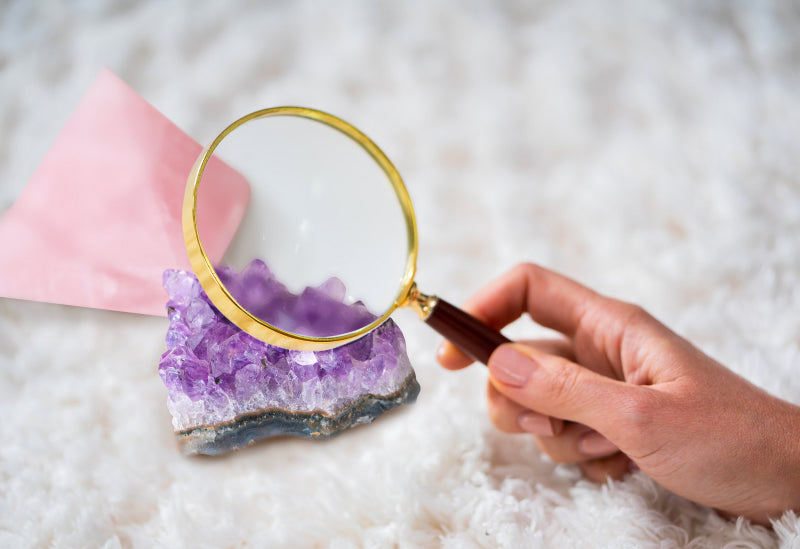
The world of crystals is as beautiful as it is complex. And as if understanding its several benefits and uses was not challenging enough, crystal lovers are often faced with one extra challenge – knowing if their crystals are authentic or not.
That’s right, as crystals get more popular, their man-made version also floods the market making it easy to accidentally buy a fake stone passing as a genuine crystal.
But fear not, because, in this comprehensive guide, we’ll go through everything you need to know to get the real deal every time.

How to Tell if a Crystal is Real or Fake?
Here are some red flags to look out for when trying to build a 100% authentic crystal collection :
1. It’s too light
A crystal may not be genuine if it seems too light to the touch. Genuine crystals have a certain weight and density because of their composition. Additionally, artificial crystals, which are frequently created from glass or synthetic materials, are typically lighter than real gemstones.
2. It warms up
A crystal may not be natural, if it feels warm to the touch or warms up. Genuine stones typically feel cold to the touch since they don't transfer heat as well. However, some artificial crystals, particularly those crafted from glass or resin, may heat up more quickly.
3. It’s too bright
A crystal that exhibits incredibly vivid colours may be an indication that something is off. Real crystals often have earthier, more muted hues, much like Mother Earth. Extremely vivid or strong colours might be a sign that the crystal has been altered or dyed artificially to improve its appearance. Occasionally, completely artificial crystals may also have extremely vivid hues, particularly if they are composed of synthetic elements.
4. Non vibrante colors under UV light
The UVcolors test is a simple way to check if a crystal is authentic. Genuine crystals often exhibit fluorescence, meaning they glow or emit visible light when exposed to ultraviolet (UV) light. To perform the test, you need a UV light source, commonly known as a black light. In a dark room, shine the UV light on the crystal and observe its reaction. If the crystal glows or displays vibrant colors under UV light, it's a positive sign of authenticity.
5. It’s too opaque
Transparency is a physical trait of real crystals. Genuine crystals often exhibit a natural clarity, allowing light to pass through with a certain degree of transparency. When a crystal lacks clarity and appears overly cloudy or opaque, it could suggest that it's fake or has undergone treatments.
6. It has tiny air bubbles
One important indicator of a real crystal from a deceptive one is the presence of air bubbles within the crystal. Authentic crystals, formed over time in natural geological processes, typically do not contain noticeable air bubbles. However, artificial crystals, particularly those made of glass or other synthetic materials, may retain air bubbles during production.
7. It’s too perfect
When a crystal appears to have perfectly symmetrical patterns, it’s usually too good to be true. Natural crystals typically form under complex geological conditions, and as a result, they often showcase unique shapes, irregularities, and asymmetries. In contrast, crystals produced in a controlled environment may exhibit an unnatural level of perfection that is rarely found in nature.
8. It’s easily scratchable
Genuine crystals are known for their resistance to scratches due to the hardness of the minerals they are composed of. However, imitation crystals are frequently softer and more prone to scratches. If you find that your crystal is showing signs of scratches too easily, it raises concerns about its authenticity.
9. It’s too cheap
A clear indication that a crystal may be fake is if its price is much less than what it usually costs. Authentic crystals, especially those with unique properties or rare formations, tend to have a certain market value based on their rarity and demand. Alternatively, the process of creating fake crystals often uses materials like glass or resin, being more cost-effective and leading to lower prices. Crystals are priced based on factors like cut, color, clarity, and rarity, with an average cost of $5 per gram.
10. It’s too eccentric
If a crystal is given an extravagant or exotic name that seems out of the ordinary, it could be a marketing tactic to make it sound more unique than it actually is. Some examples of this would be the Aqua Aura Quartz, Cermikite or Galena Geodes. So, if your crystal's name or features seem unusually flamboyant, it's a good reason to approach with caution and investigate further to ensure its authenticity.
11. Magnifying glass
Take a close look at the crystal's surface, checking for natural imperfections like inclusions, tiny cracks, or irregular patterns, which are common in genuine crystals formed by natural processes. Additionally, observe the overall clarity and transparency; real crystals usually maintain a certain level of clarity, allowing light to pass through without significant distortion. If the crystal appears too perfect, symmetrical or lacks these natural features under the magnifying glass, it could raise suspicions of being fake or heat-treated.

Consult an expert
A reliable way to assess the authenticity of your crystal might be to get the expert opinion of a gemologist or mineralogist. You can find these experts at reputable jewelry stores, gem and mineral shows, or through online gemological associations. They have the knowledge and tools to examine the crystal thoroughly, considering factors like its structure, composition, and any treatments it might have undergone.
At Mindful Souls, we ensure the authenticity of our crystals through professional testing methods that are not feasible for home use, such as the flame test. These specialized procedures guarantee that each crystal's properties are genuine and of the highest quality, providing our customers with confidence in their purchases.
A reliable way to assess the authenticity of your crystal might be to get the expert opinion of a gemologist or mineralogist. You can find these experts at reputable jewelry stores, gem and mineral shows, or through online gemological associations. They have the knowledge and tools to examine the crystal thoroughly, considering factors like its structure, composition, and any treatments it might have undergone.
Take a look at our authentic gemstone certificates.

What Are the Most Commonly Faked Crystals? 12 Crystals
Turquoise Crystals

| Physical Characteristics of Real Turquoise | |
| Origin | USA, China, Iran, Mexico, Egypt, Turkey, Australia, Israel and Tibet |
| Weight | Dense |
| Hardness on Mohs | 5-6 |
| Transparency Level | Opaque to Semitranslucent |
| Texture | Soft or Rough |
| Inclusions | Matrix, Pyrite, Calcite, Limonite, Quartz and Copper. |
| Colors | Sky Blue, Robin's Egg Blue, Greenish-Blue, Green, Yellow-Green, Brownish-Red, White and Matrix Colors. |
| Colors Zoning | Usually None |
| Light Interaction | Refractive Index |
| Fluorescence | Very Weak |
| Flame Test | Color Change - Discouraged |
Sapphire Crystal
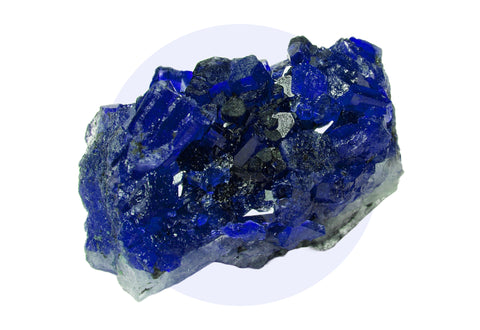
| Physical Characteristics of Real Sapphire | |
| Origin | Sri Lanka, Myanmar and Australia |
| Weight | Denser |
| Hardness on Mohs | 9 |
| Transparency Level | Transparent to Opaque |
| Texture | Glassy |
| Inclusions | Rutiles, Growth Lines, Cloudy, Gas Pockets and Hazy |
| Colors | Blue, Pink, Yellow, Orange, Purple, Green, Clear and Black |
| Colors Zoning | Yes |
| Light Interaction | Pleochroism, Asterism and Chatoyancy |
| Fluorescence | Red, Orange, Yellow, Pink and Violet |
| Flame Test | No change - Discouraged |
Ruby Crystal
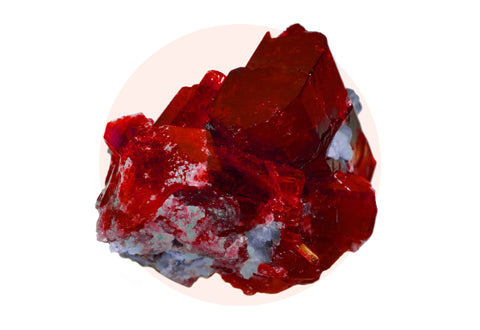
| Physical Characteristics of Real Ruby | |
| Origin | Cambodia, Thailand, Sri Lanka, Tanzania, Burma and Madagascar |
| Weight | Denser |
| Hardness on Mohs | 9 |
| Transparency Level | Usually Transparent |
| Texture | Glassy |
| Inclusions | Growth lines, veins, rutiles and needles |
| Colors | Pigeon Blood Red, Vivid Red, Burma Ruby Red, Deep Red, Pinkish-Red, Brownish-Red, Orange-Red and Purple-Red |
| Colors Zoning | Yes |
| Light Interaction | Pleochroism |
| Fluorescence | Red |
| Flame Test | No change - Discouraged |
Jade Crystals

| Physical Characteristics of Real Jade | |
| Origin | Canade, British Columbia, New Zealand, Taiwan, Russia, China, Canada, Guyana, USA, Mexico, Japan, Costa Rica and Myanmar |
| Weight | Denser |
| Hardness on Mohs | 6.5-7 |
| Transparency Level | Transparent to Opaque |
| Texture | Silky or Waxy |
| Inclusions | Spots, Cracks, Rutiles and Fractures |
| Colors | Green, White, Lavender, Yellow, Red, Black, Blue and Orange |
| Colors Zoning | Yes |
| Light Interaction | Reflection and Retraction |
| Fluorescence | None |
| Flame Test | No change - Discouraged |
Opal Crystal
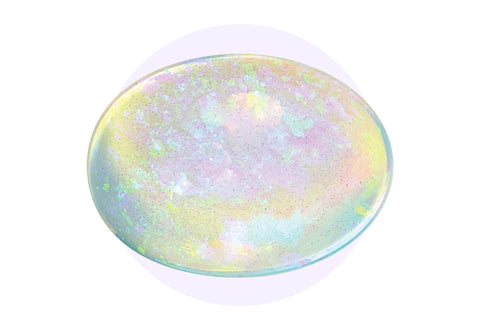
| Physical Characteristics of Real Opal | |
| Origin | Canade, British Columbia, New Zealand, Taiwan, Russia, China, Canada, Guyana, USA, Mexico, Japan, Costa Rica and Myanmar |
| Weight | Denser |
| Hardness on Mohs | 6.5-7 |
| Transparency Level | Transparent to Opaque |
| Texture | Silky or Waxy |
| Inclusions | Spots, Cracks, Rutiles and Fractures |
| Colors | Green, White, Lavender, Yellow, Red, Black, Blue and Orange |
| Colors Zoning | Yes |
| Light Interaction | Reflection and Retraction |
| Fluorescence | None |
| Flame Test | No change - Discouraged |
Quartz Crystal
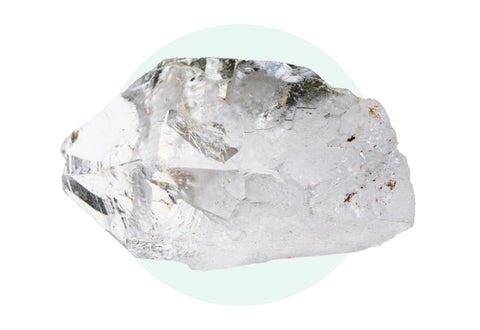
| Physical Characteristics of Real Quartz | |
| Origin | Brazil, USA, Madagascar, China, Namibia, Russia, Australia, India, South Africa and Mexico |
| Weight | Lighter |
| Hardness on Mohs | 7 |
| Transparency Level | Transparent to Opaque |
| Texture | Rough or Milky |
| Inclusions | Fibrous, Crystals, Fractures, Dendrites, Veining, Spots and Pockets |
| Colors | Clear, White, Grey to Black (Smoky Quartz), Pink (Rose Quartz), Purple (Amethyst), Yellow (Citrine), Purple and Yellow or Orange (Ametrine), Dark Brown to Black (Morion) and Green (Prasiolite) |
| Colors Zoning | Yes |
| Light Interaction | Refractive |
| Fluorescence | Refractive Index, Birefringence, Low Dispersion, Phantom Crystals, Inclusions and Rutile Needles and Aventurescence |
| Flame Test | No change - Discouraged |
Howlite Crystal
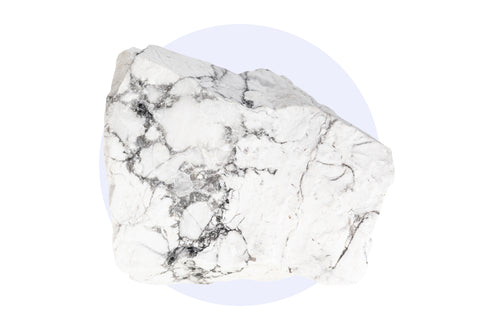
| Physical Characteristics of Real Howlite | |
| Origin | Canada, Turkey, Mexico, Germany, Russia and USA. |
| Weight | Lighter |
| Hardness on Mohs | 3.5 |
| Transparency Level | Opaque |
| Texture | Smooth and Chalky |
| Inclusions | Veins, Mineral and Porosity |
| Colors | White, Light Gray and Black Details |
| Colors Zoning | None |
| Light Interaction | None |
| Fluorescence | None |
| Flame Test | No change - Discouraged |
Blue Obsidian Crystal
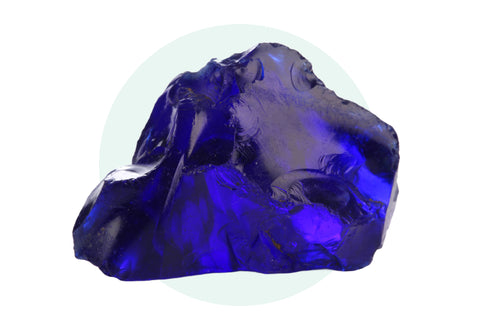
| Physical Characteristics of Real Blue Obsidian | |
| Origin | USA, Mexico and Kenya |
| Weight | Lighter |
| Hardness on Mohs | 5-5.5 |
| Transparency Level | Opaque |
| Texture | Smooth and Glassy |
| Inclusions | None |
| Colors | Blue and Bluish-Grey |
| Colors Zoning | None |
| Light Interaction | None |
| Fluorescence | None |
| Flame Test | No change - Discouraged |
Tiger's Eye Crystal
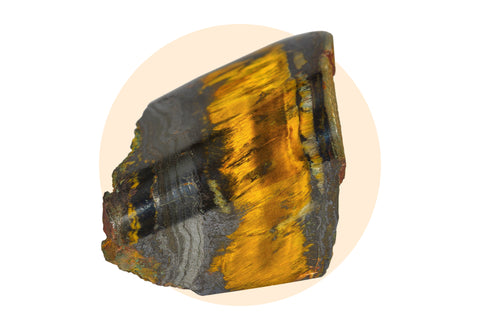
| Physical Characteristics of Real Tiger's Eye | |
| Origin | South Africa, Australia, Namibia, India and USA |
| Weight | Denser |
| Hardness on Mohs | 6.5-7 |
| Transparency Level | Opaque |
| Texture | Smooth and Silky |
| Inclusions | Fibrous Inclusions and Mineral Layers. |
| Colors | Golden Brown, Red, Blue-Gray and Mixed Colors |
| Colors Zoning | Chatoyancy |
| Light Interaction | Asterism |
| Fluorescence | None |
| Flame Test | No change - Discouraged |
Moldavite Crystal

| Physical Characteristics of Real Green Moldavite | |
| Origin | Czech Republic, Austria and Germany |
| Weight | Denser |
| Hardness on Mohs | 5.5-6 |
| Transparency Level | Transparent |
| Texture | Smooth |
| Inclusions | Fibrous Inclusions and Mineral Layers |
| Colors | Green, Olive, Forest Green |
| Colors Zoning | None |
| Light Interaction | Refractive Index |
| Fluorescence | None |
| Flame Test | No change - Discouraged |
Goldstone - The Most Authentic Unnatural Stone
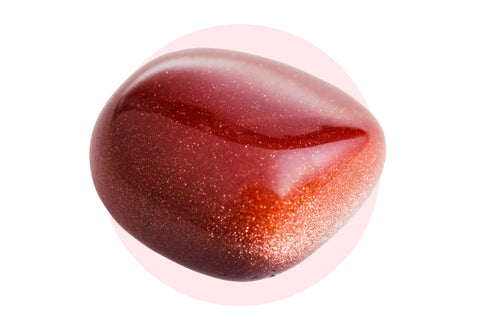
Finally, the Goldstone is an example of how some man-made stone can look perfectly natural! Although commonly mistaken for an authentic crystal, Goldstone is actually just colored glass. Its smooth surface and earthy color contribute to the illusion of natural authenticity.

Real Vs Fake Cyrstal Comparison Chart
| Features | Real Crystals | Fake Crystals |
|
Weight |
Denser |
Lighter |
|
Temperature |
Cold to the touch |
Warm to the touch |
|
Color & Brightness |
Earthy & natural tones |
Bright & flashy tones |
|
Transparency |
Pass through light |
Completely opaque |
|
Light Interaction |
Reflection, refraction, dispersion & more |
None |
|
Pattern & Texture |
Unique shapes, irregularities & asymmetries |
Perfectly symmetrical |
|
Price Range |
Higher-Priced |
Cheaper |
|
Fluorescence |
May have it or not |
None |
|
Edges |
Rough |
Smooth |

Spotting Misleading Names to Recognize Gemstone Impostors
In many instances, the name of a gem provides valuable insights, as additional terms are often incorporated to associate the gemstone with its origin or distinctive features. However, there are occasions when these names can be deceptive, creating a misconception that you are dealing with a particular type of crystal when, in reality, it may be another.
Here are some common examples of this:
| False Gemstone Names | Actual Gemstone Names |
| Smoky Topaz | Smoky Quartz |
| Spanish Topaz | Citrine |
| Oriental Amethyst | Violet Sapphire |
| Indian Jade | Aventurine |
| Bohemian Crysolite | Moldavite |
| Siberian Ruby | Tourmanile |
| Brazilian Sapphire | Blue Tourmaline |
| Blue Optal | Lazulite |
| African Turquoise | Jasper |
| Montana Ruby | Red Garnet |
| Ural Sapphire | Blue Tourmanile |
| Copper Lapis | Azulite |
| Brazilian Ruby | Red or Pink Topaz |
| African Emerald | Green Fluorite |

How to REALLY Make Sure My Crystals Are Real.
While tests and red flags can be useful to check the authenticity of your crystals, they're not foolproof. Crystals come in various shapes, sizes, and compositions, introducing a lot of variables into the mix.
For instance, genuinely soft crystals like Calcite might show scratches even if they're real. Not all natural crystals react to UV light, and some might appear too perfect simply due to their unique growth conditions.
So, relying solely on one test might not provide the complete picture. To ensure your gem collection is genuinely authentic, it's important that you get them from a reliable crystal shop - just like Mindful Souls!
How much an authentic crystal worth?
On average, expect to spend around $5 per gram for crystals, with prices influenced by their condition, cut, color, clarity, and carat. Larger jewelry items generally cost less per unit, while high-quality crystal clusters can reach $25.
The value of gemstones, which requires extensive time, effort, and knowledge to mine, is rising due to increased scarcity, making them more desirable and profitable.
However, not all crystals should vary widely in price; for example, selenite pieces should not be exorbitantly priced. It's crucial to differentiate between similar-looking crystals, like distinguishing a Herkimer Diamond from a milky quartz point, to avoid overpaying.
The value of crystals, such as quartz, is determined by clarity, size, color, transparency, origin, cut, shape, rarity, market demand, and condition. Personal value also plays a significant role, as some may pay more for crystals that hold special meaning or rarity.
Despite the subjective nature of valuation, it's essential to stay informed and cautious of overpricing. Remember, the worth of a crystal goes beyond size, focusing on quality and unique characteristics.

FAQ Real V/S Fake
Yes, all Mindful Souls’ crystals are 100% natural and ethically sourced.
On the other hand, the benefits of natural crystals are also linked to the placebo effect and the power of belief. Believing in the healing properties of crystals can manifest positive changes in the body and relationships.
In contrast, fake crystals lack a genuine connection to the Earth.
While they may mimic the appearance of natural crystals, they fall short in accessing the true spiritual and healing potential. The genuine belief and resonance with Earth's frequencies make natural crystals stand out, offering profound benefits that set them apart from their artificial counterparts.
Learn more about crystals and their meanings, with our Crystal Meanings Guide.
9. What are the most powerful crystals for manifesting intentions?Absolutely! If you feel like you need some space, you can always skip a box and get back on track later on. Simply log in to your customer portal and navigate to "Manage My Subscription" tab. Once there, click on “Skip Shipment.”
You can also email our customer support at support@mindfulsouls.com or call us toll-free: 1 888 307-1295.

MindfulSouls 100% Authentic Certified Crystals
>> Browse our Crystal Authenticity Certificates <<

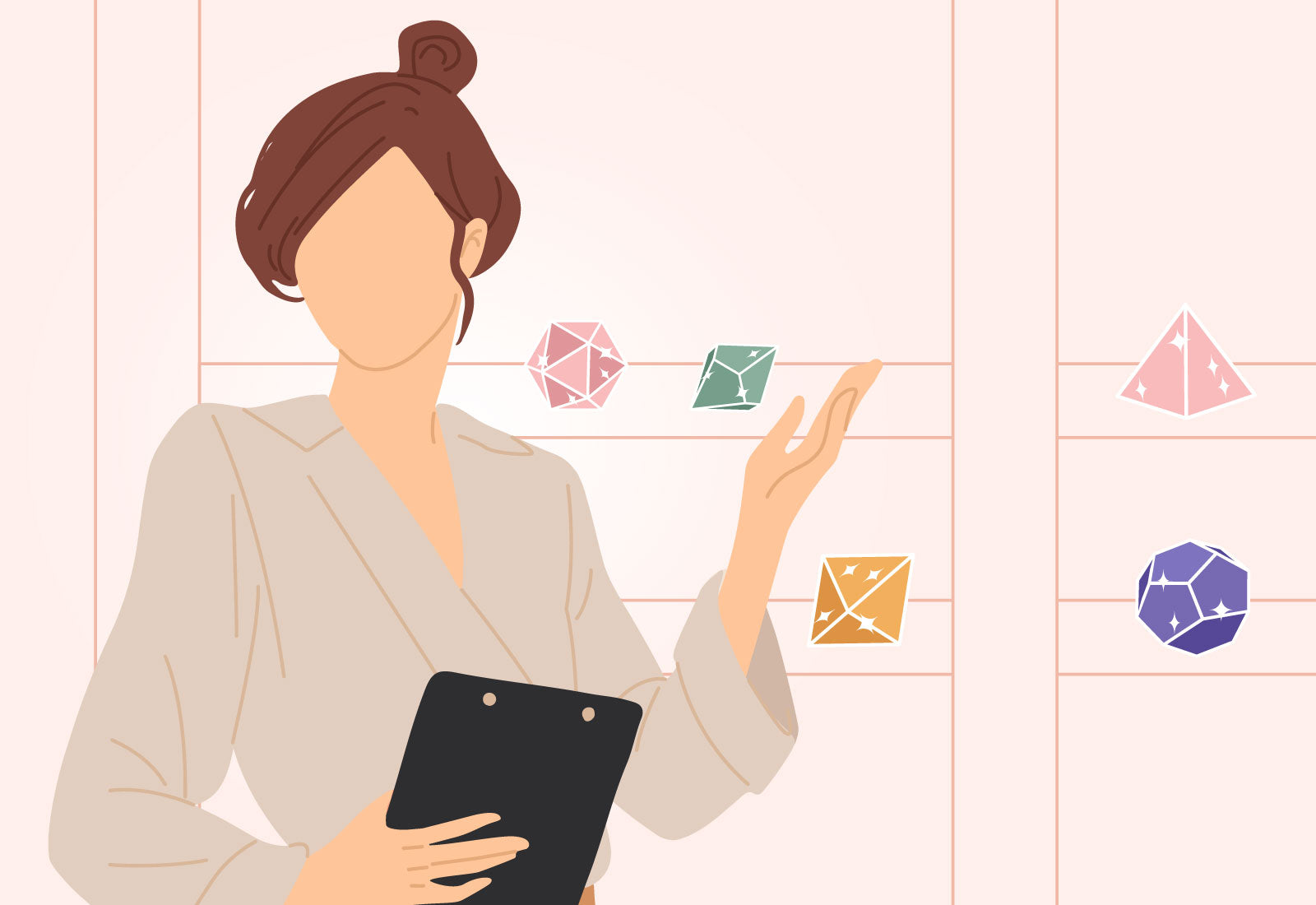

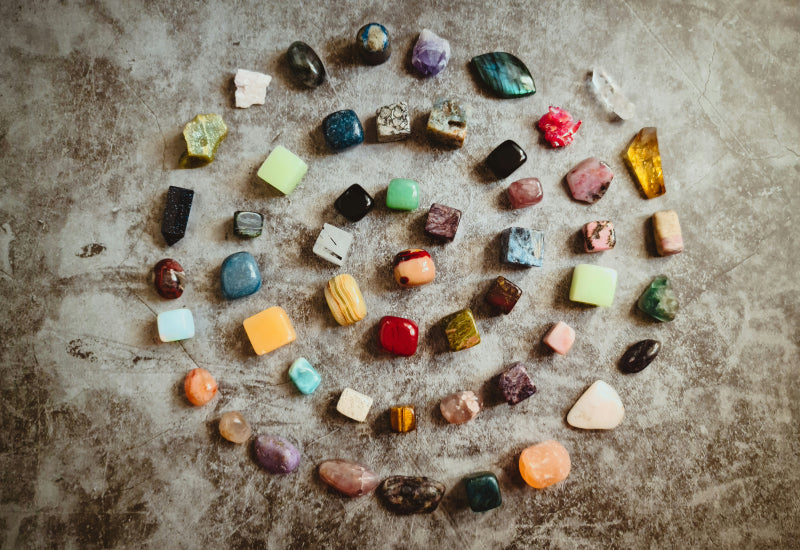





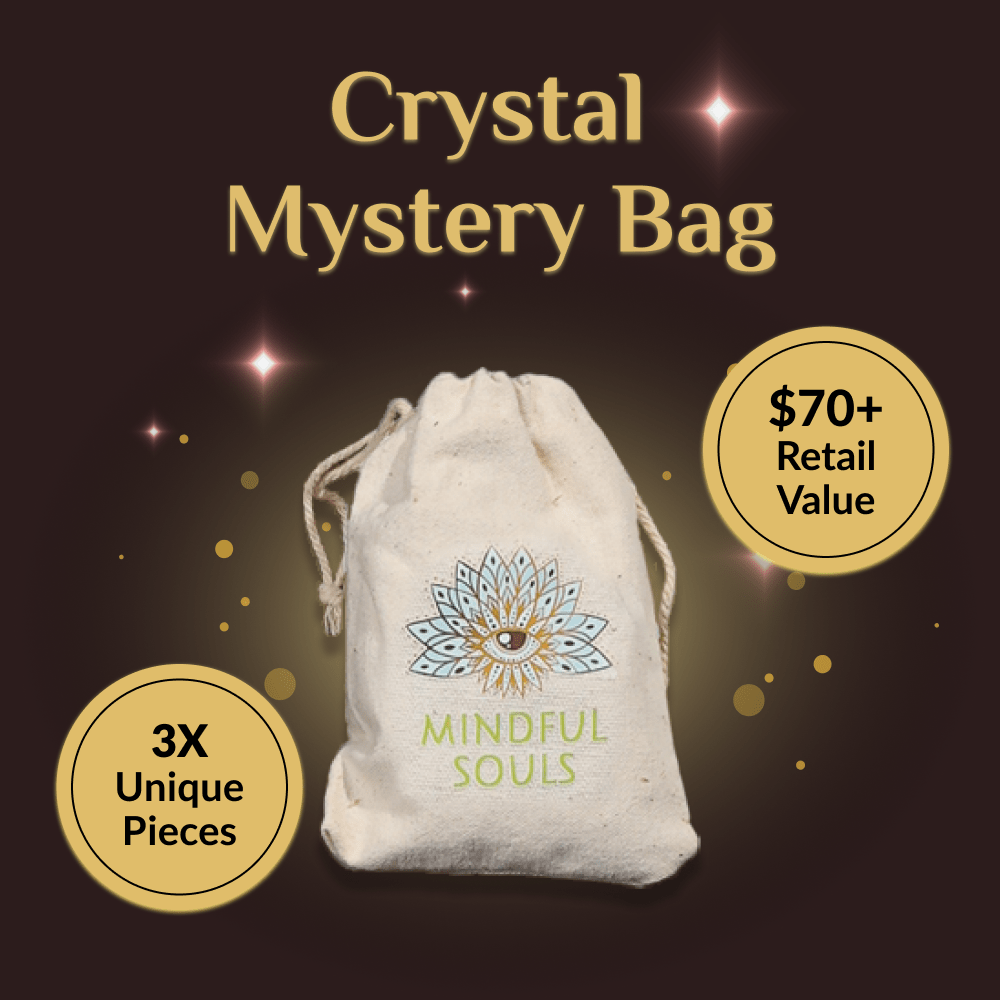
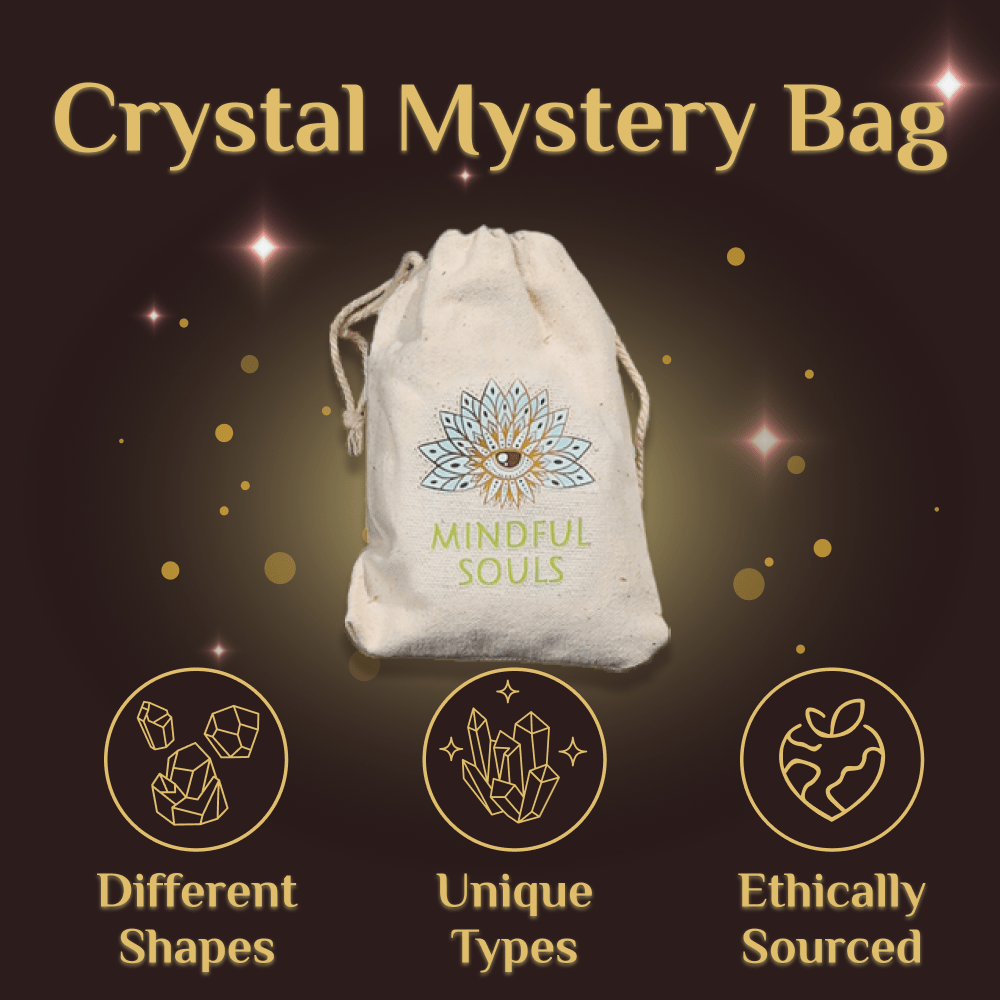






























I have a stone like diamond
How I identify this stone
Thank you for explaining. I’m currently healing from decades old health and emotional ptsd. During a Reiki session, I didn’t notice a stone had fallen off my torso and landed next to my elbow. Within minutes, the part of my skin that was touching the stone became extremely painful, like my elbow was being bent the opposite direction. I had to stop the session to have the stone removed. It was originally placed on my chest to help me release anger and sorrow. I knew, with my healer confirming, the stone was working; confirming I was on the right path with my healing. Now I’m about to purchase my own stones to work on myself in-between my Reiki sessions. Thank you-
Thank you, Mindful Souls, my friends Debbie gave me some crystals to help me. I am glad that you all have taken the time to explain each crystal in depth. Now if I have a question ,I will turn to Mindful Souls for all of my answers.